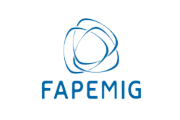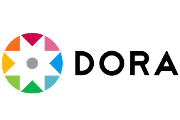Guide for Authors
Guidelines for authors
1) The article must be sent via the electronic system Open Journal Systems - OJS (https://www.periodicos.unimontes.br/index.php/cerrados).
2) The content expressed and published is the exclusive responsibility of the author(s), exempting Cerrados magazine from any responsibilities.
3) article must be unpublished, not have been submitted and/or published in another journal, book or scientific event.
4) The author and/or co-author may publish only one article in each issue of the journal. As of 10-05-2020, the article must have a maximum of three authors.
4.1) At least one author has a minimum PhD degree and is a Professor of a Stricto Sensu Postgraduate Program.
4.1) At CAPES, Revista Cerrados has Geography as its reference area, this limits the publication of articles by authors linked to the interdisciplinary area.
5) Articles can be written and sent for evaluation exclusively in Portuguese for contributions from Brazilian authors, allowing foreign authors to work in English, French or Spanish.
6) Works in the form of articles arising from research in publications will be accepted from 2024 onwards.
6.1) Translated article of scientific relevance to Geography will be published, with the authorization of the author and the Magazine/Publisher that published the original text.
7) The length of the text may vary from 15 to 30 pages for articles and translations (translations must be accompanied by authorization from the author and the original text).
8) Texts must be presented in font size 12, Times New Roman font, 1.5 spacing, A4 page, margins 2.5 cm (top and bottom) and 3 cm (right and left).
9) The author(s) must send complete works, definitively revised by professionals in Portuguese (updated spelling check) and other languages when applicable.
9.1) In the article submission process, it is mandatory to fill in the metadata with the Orcid link, title and institutional link.
10) Text structure:
10.1- Title of the work in the language in which the text was written, accompanied by two translations into a foreign language, following the summaries.
10.2- Name(s) of the author(s) in full – below the name(s) place the institutional link and electronic contact (e-mail).
10.3- Abstracts (trilingual) – For articles written in Portuguese, the abstract must be in Portuguese, with up to 200 words, accompanied by a summary in English and another summary in Spanish or French. It is necessary to translate summaries from foreign languages by specialized professionals, as an automatic translator should not be used. Remembering that the article written in a foreign language must have the second summary in Portuguese.
10.4 – Keywords: use a minimum of three and a maximum of five words, accompanying the abstracts.
10.5 – The text must present an introduction (presentation of the theme, problem, objective and methodology).
10.6 – Development of the discussion – use titles/subtitles, without numbering, to develop a sequence of scientific writing, aiming for coherence and cohesion of the discussion.
10.7 – Conclusions or final considerations – summarize the results of the discussions developed in the text.
10.8 – Thanks to the funding institution(s), if any.
10.9 – References.
11 - Reviews and notes do not require a summary and keywords. And interviews must follow the form of question (interviewer) and answer (interviewee).
12) Text formatting, in accordance with the standards of the Brazilian Association of Technical Standards – ABNT, new edition of NBR 14.724 published in April 2011; second edition of NBR 15.287 published in April 2011 and third edition of NBR 10.719 valid from July 2011.
12.1 - Suggestions for standardization manuals:
FRANÇA, Júnia Lessa; VASCONCELLOS, Ana Cristina de. Manual for standardizing technical-scientific publications. 9. ed. Belo Horizonte: Editora UFMG, 2013. 263 p.
FUCHS, Angela Maria Silva; FRANCE, Maira Nani; PINHEIRO, Maria Salete de Freitas. Guide for standardizing technical-scientific publications. Uberlândia: EDUFU, 2013. 286 p.
13) Quotes:
13.1 – Indirect citation – it is mandatory to include the (scientific) name of the author and the year of publication. Note: when the author's name comes before the citation, only capitalize the initial letter of the name and the year of publication must be in parentheses; ex: Segundo Leite (2015). And when the author's name comes after the citation, it must be in capital letters in parentheses together with the year of publication, example: (Leite, 2015).
13.2 – Short and long direct quotation:
13.2.1 – Short direct quote: a quote of up to three lines, which must be in the body of the text and between double quotation marks, and also present the name of the author, the year of publication and the page number from which the quote was taken.
Note: when the author's name comes before the citation, put only the initial letter of the name in capital letters and the year of publication and the page must be in parentheses; ex: According to Leite (2015, p. 1), “Geoprocessing is ......”. And when the author's name comes after the citation, the author's name must be in capital letters in parentheses together with the year of publication and the page number, for example: “Geoprocessing is .......” (Leite, 2015, p. 1).
13.2.2 – Long direct quotation: any quotation longer than three lines must be highlighted in the text, four centimeters to the left, with single spacing and in letters size 10 (ten). To enter the author's name, year of publication and page number, see the examples in item 13.2.1.
Note: consult ABNT standards for other types of documents mentioned.
14 – Illustrations (maps, photographs, diagrams, tables, graphs, among others).
14.1 – Titles (mandatory) must be numbered consecutively and placed at the top of the illustration.
14.2 – Fonts (mandatory) must be placed at the bottom of the illustration in size 10 letters.
14.3 – In the case of tables, charts and graphs, on the inside, texts and numbers must be typed in size 10.
14. 4 – Images must be saved in JPG, with 300 dpi, aiming for good quality images.
15- Footnotes – should only be used when essential for understanding the text, placed at the foot of the page, indicated by ascending numbering, typed in size 10.
16 - References – list only those cited in the body of the text, arranged in ascending alphabetical order from A to Z, in accordance with ABNT standards.
Examples:
Book
Last name. Book's title. Place of Edition: Publisher, year of publication. Pages.
Example: CORRÊA, Roberto Lobato. Geographic Trajectories. Rio de Janeiro: Bertrand Brasil, 2001. 302 p.
Book chapter
SURNAME, First name (of the chapter author). Chapter title. In: SURNAME, Names (Ed., Org.,). Book's title. Place of Edition: Publisher, year of publication. Pages. home page – end page of the chapter.
Example: VILAÇA, Flávio. Problems of urban transport in Brazil. In: SILVEIRA, Márcio Rogério (Org.). Circulation, transport and logistics: different perspectives. São Paulo: Other Expressions, 2011. 624 p. P. 377-381.
Articles
SURNAME, First name (of the author of the article). Article title. Name of the Magazine, City, volume, number, starting and ending page of the article, year of publication.
* Note: Revista Eletrônica add: Available at: <insert access link here>. Accessed on: enter the date of access to the document here.
Examples:
PEREIRA, Luiz Andrei Gonçalves; FERREIRA, William Rodrigues. Transport logistics, international trade and export flows in the north of Minas Gerais. Goiano Geography Bulletin, Goiânia, v. 36, no. 1, p. 67 - 85, Mar. 2016. Available at: <https://revistas.ufg.br/bgg/article/view/40368>. Accessed on: 08 Jun. 2016.
Thesis/Dissertation/Monograph
Last name. Title of thesis/dissertation/Monograph. Publication date. Number of sheets. Thesis/Dissertation/Monograph (Doctorate/Master's/Graduation in...) - Institute, University, place of defense, date of defense.
PEREIRA, Anete Marília. Middle City and region: the meaning of Montes Claros in the North of Minas Gerais. 2007. 350 f. Thesis (Doctorate in Geography), Institute of Geography, Federal University of Uberlândia, Uberlândia, 2007.
Other references: consult ABNT standards.

















